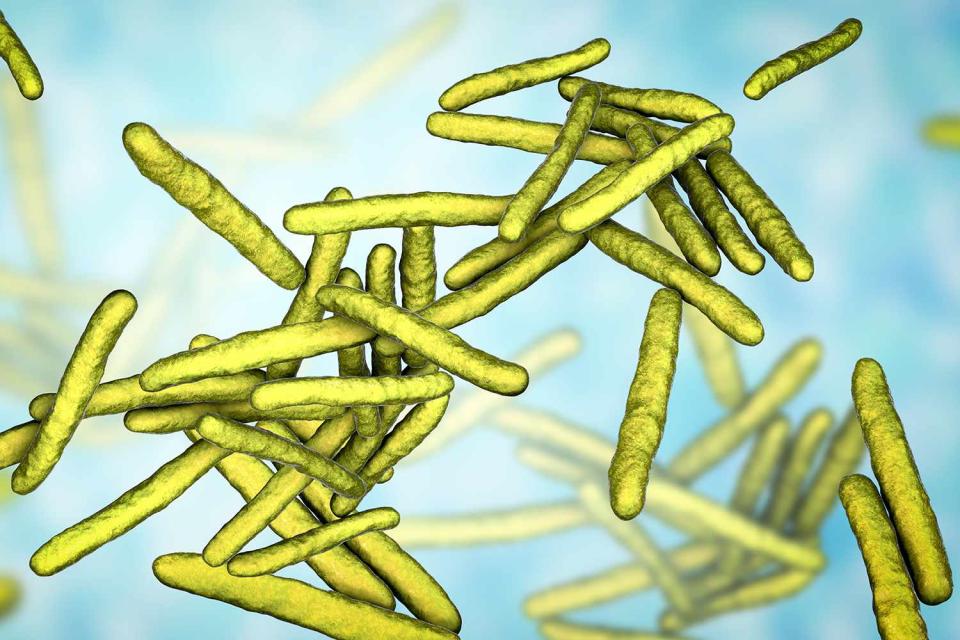There's a Leprosy Outbreak in Florida
The CDC says Central Florida accounts for 81% of leprosy cases in the state — and the disease could become endemic

Getty
Leprosy bacteriaFlorida has seen an uptick in leprosy cases, an indication that the disease is becoming endemic, or regularly occurring within the community,
According to the Centers for Disease Control and Prevention, Florida accounted for nearly one-fifth of reported leprosy cases in the U.S., and that Central Florida had 81% of the cases in the state.
Leprosy, also known as Hansen's Disease, has been historically uncommon in the U.S., the CDC said. Despite a peak in 1983, the number of cases decreased from the 1980s to the 2000s, but has since increased. Particularly in the southeastern states, reported cases of leprosy have risen two-fold in the last decade.
Related: Syphilis Outbreak In Houston: Cases in Women Up 128%
Also known as Hansen’s disease, Leprosy is caused by Mycobacterium leprae, a slow-growing bacteria, according the CDC. Symptoms include discolored patches of skin; thick, stiff or dry skin; ulcers on the soles of feet; swelling or lumps on the face or earlobes; and loss of eyebrows or eyelashes. Leprosy can also result in damage to the nerves such as muscle weakness, numbness in the affected areas, enlarged nerves, and eye issues. Additionally, a nosebleed and stuffy nose are symptoms affecting the mucous membrane linked to leprosy.
The disease is now curable if caught and treated early with antibitoics.
“Whereas leprosy in the United States previously affected persons who had immigrated from leprosy-endemic areas,” said the CDC, “[approximately] 34% of new case-patients during 2015–2020 appeared to have locally acquired the disease. Several cases in central Florida demonstrate no clear evidence of zoonotic exposure or traditionally known risk factors.”
As an example, the CDC cited a 54-year-old Central Florida man who went to a dermatology clinic for treatment due to “a painful and progressive erythematous rash.” He said that he had not traveled domestically or abroad, had no contact with armadillos (which the CDC said are naturally infected with the bacteria that causes Hansen’s) or immigrants from leprosy-endemic countries, and no connection with someone carrying the disease. Further examination revealed the man had a case of leprosy.
“The absence of traditional risk factors in many recent cases of leprosy in Florida, coupled with the high proportion of residents, like our patient, who spend a great deal of time outdoors, supports the investigation into environmental reservoirs as a potential source of transmission…In summary, our case adds to the growing body of literature suggesting that central Florida represents an endemic location for leprosy.”
Related: Highest Number of Norovirus Outbreaks on Cruise Ships Recorded in 11 Years
The CDC says that it is uncertain how leprosy is transmitted between people, although scientists believe it may occur when someone with the disease coughs or sneezes while the other person breathes in the droplets carrying the bacteria. The agency added that prolonged contact with a person untreated for the disease over a long period of time is necessary to contract it. It also said that leprosy is not transmittable by shaking hands or sitting next to a person with the disease.
There were 159 new cases of leprosy reported in the U.S. in 2020, accordion to the National Hansen’s Disease Program. About 69 percent of those new cases occurred in Florida, California, Louisiana, Hawaii, New York And Texas.
Florida’s first case of leprosy was reported in 1921, per the Florida Department of Health.
Never miss a story — sign up for to stay up-to-date on the best of what PEOPLE has to offer, from celebrity news to compelling human interest stories.PEOPLE's free daily newsletter
For more People news, make sure to sign up for our newsletter!
Read the original article on People.

